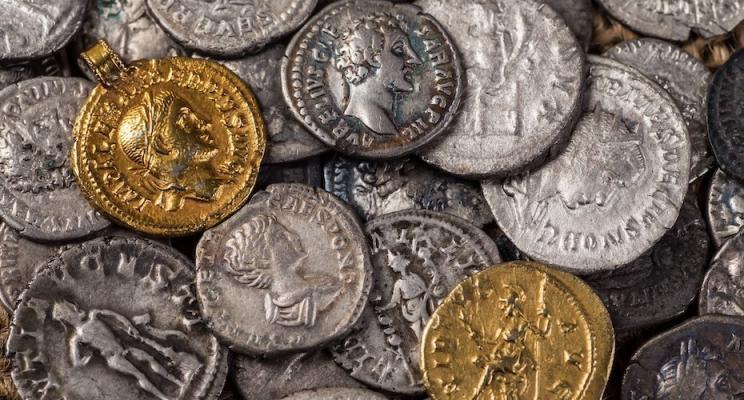
The definition of retail is “the sale of merchandise from a single point of purchase directly to a customer who intends to use that product.” And tracing such transactions throughout history, you’ll find that the origins of retail date back about 10,000 years to when ancient peoples bartered one good for another.
Most of that early trading occurred one-on-one and in small quantities, but once people figured out how to preserve meats, fish, spices, and oils, traders could maintain an inventory of goods that wouldn’t spoil immediately and that could travel. This more widespread distribution made it possible for more goods to reach more people and for retail to achieve a new level of scale.
Cash is King
This early version of retailing necessitated transactions where two people needed precisely what the other had to barter, which wasn’t ideal. A better solution arrived around 3,000 BC in Mesopotamia, known as the “Cradle of Civilization.” It was the Shekel, a metal coin representing a measurement of weight, which we now recognize as the first currency. Coins had several big advantages, the most obvious one being that you can carry coins in a purse or pocket.
Setting up Shop
As other civilizations blossomed in places such as Ancient Greece and Rome, retail continued to evolve, with sellers setting up shop in stationary locations and letting their customers come to them. In fact, the Romans were so successful at building their empire that they needed to construct a new place to house all the spoils of their conquests. About 2,200 years ago, they built the Horrea Galbae, a massive complex of warehouses that was used to store the public’s grain supply, as well as goods like imported olive oil, wine, food, and clothing. But that’s another story.
Open-Air Markets
Zip ahead a dozen or so centuries through history to 800 BC and you’ll find merchants gathering regularly in Greece at a place known as the Agora to sell food, clothing, and jewelry to the public. The Agora was also an “open place of assembly,” for citizens, so with the variety of merchandise available in this open-air marketplace and its use as a central meeting place, you could say the Agora was the forerunner of the modern-day shopping mall. Similar marketplaces, such as Rome’s Forum, would become the hallmark of emerging civilizations around the globe. (And if you were wondering why “Agora” sounds familiar, “Agoraphobia” is “the fear of entering open or crowded spaces.”)
The Industrial—and Retail—Revolution
The story of retail for many millennia was the direct exchange of some form of currency for goods between merchants and consumers, with the goods coming from sources like farmers, fishermen, and artisans—a literal “cottage industry” of small workshops and individual manufacturers producing merchandise.
That system was turned on its head in the 1700s with the dawn of the First Industrial Revolution when people moved from a life of farming in rural areas to factory work in urban areas.
One Store, Many Products
With the proliferation of goods such as textiles, glassware, and ceramics produced in the factories of Britain, it’s no surprise that what’s considered by many historians to be the world’s first department store opened its doors in London in the midst of the Industrial Revolution.
Unlike individual shops, department stores offered several types of merchandise—clothing, shoes, jewelry, clocks, and hats—all under one roof. Customers could now browse several departments and make multiple purchases during a single shopping trip, ushering in a fundamental shift in the retailing experience and the merchant-customer relationship.
Coming up next—The History of Retail: Part II. Mail order, malls, and the first online transaction.